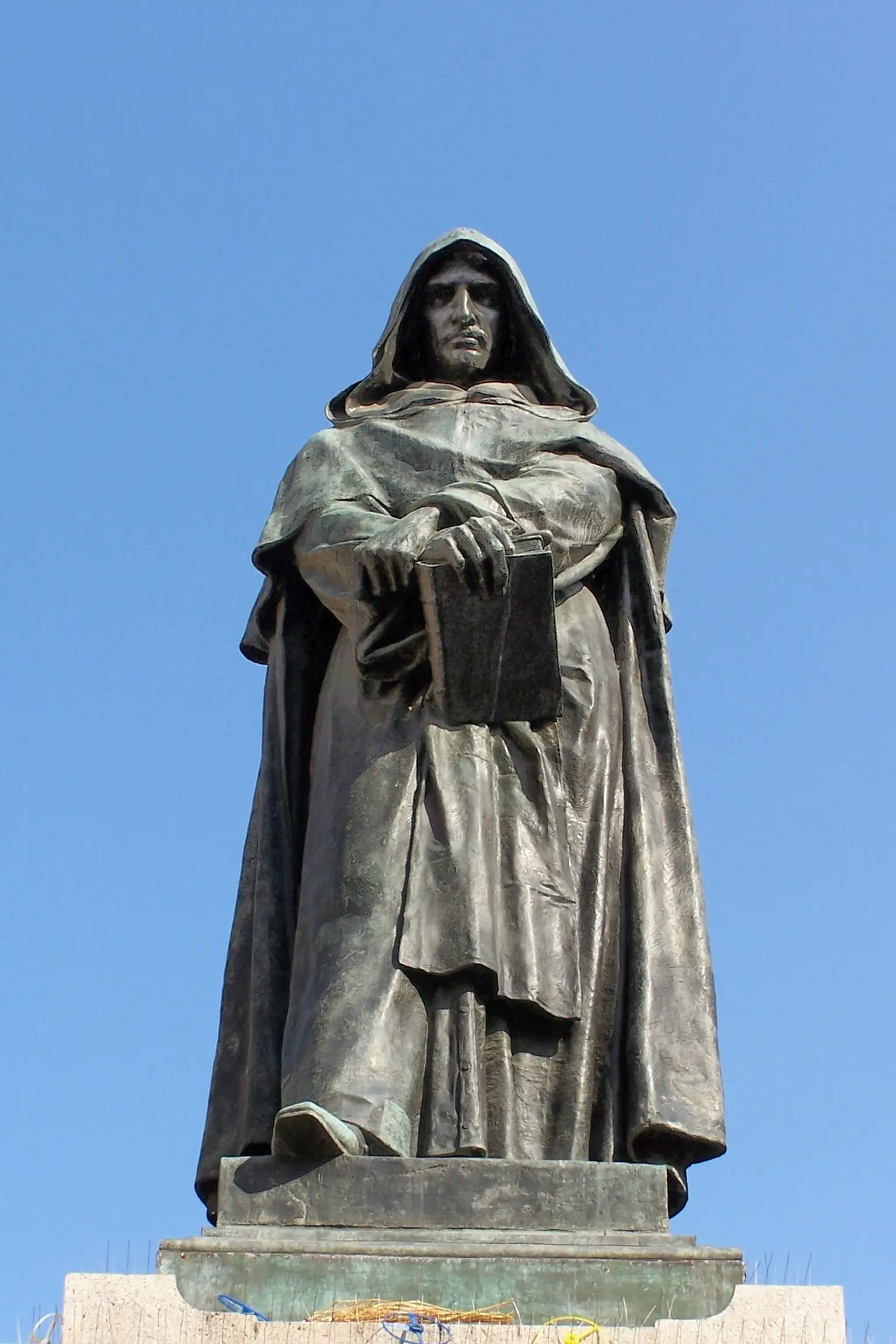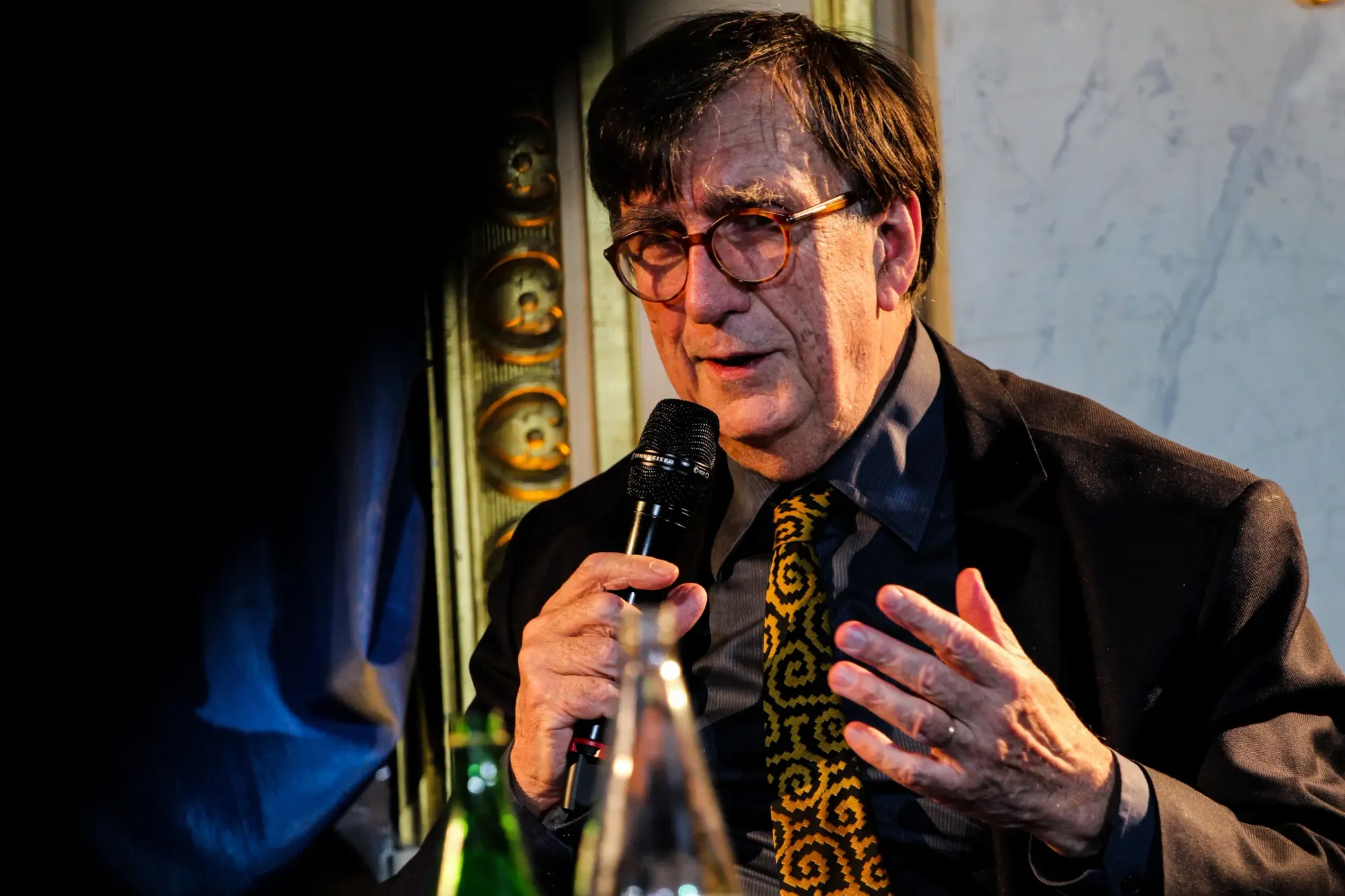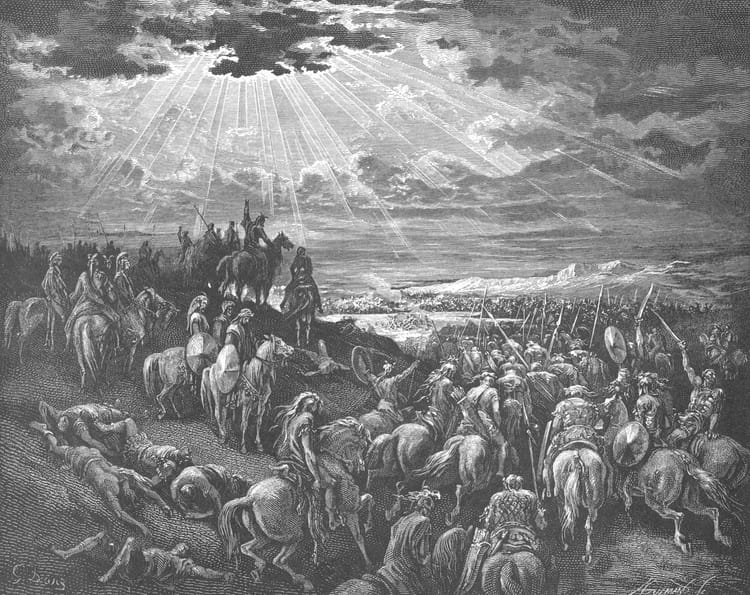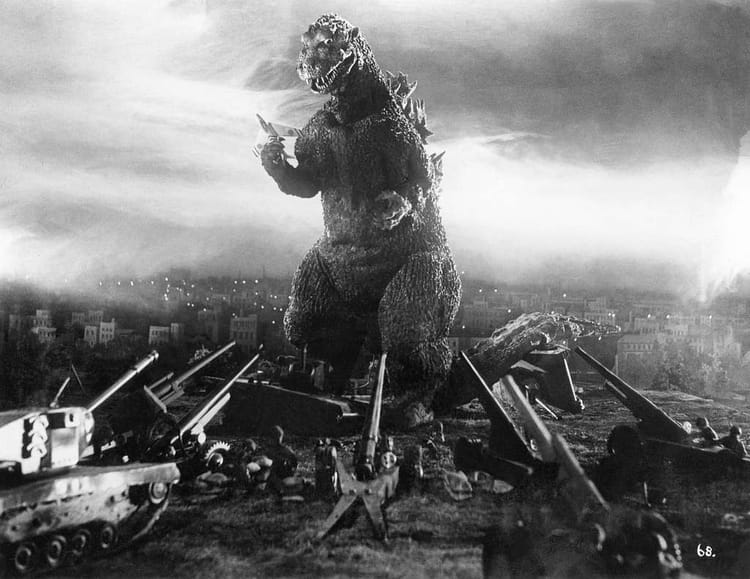Has Science Fiction Ever Been Modern?

My last essay dealt with The Fifth Head of Cerberus and its critique of progress. I’d like to circle back to this theme more, which is sort of turning these last few posts into a series on sci-fi and modernity. To the point: progress itself is central to modernity’s self-understanding; it is part of its myth. But then the question arises, “what even is modernity?” Does anyone know? When did it start? 1492? 1517? 1789? While I was in grad school I took a class on the subject and the short answer was “no one is sure.”
It’s an interesting question because we all know that something is different between “now” and “then.” One of the most significant attempts to understand it was Charles Taylor’s mammoth book A Secular Age, which understood modernity (in part, at least) as the period during which belief in God went from being axiomatic to being just one option among many. The multiplication of options might be its key feature. And, of course, this only happened because of a whole host of others things.
There are a few grand narratives that modernity tells about itself. But academic provocateur Bruno Latour attacked the basis of the question in his book We Have Never Been Modern (it’s helpful when book just states its thesis outright, isn’t it?). For Latour, a lot of the narratives of modernity—that is, now is the time in which boundaries are drawn between nature and society, between humanity and the world, between self and other—were too simple. Modernity is defined, instead, by its confusions. We claim we don’t blend politics and religion. We believe we keep science protected, it lives snugly in labs and is emancipated from any cultural matrix that might influence it. But look around, contended Latour, we mix our categories harder than anyone in history. As he wrote, “The less moderns think they are blended, the more they blend. The more science is absolutely pure, the more it is intimately bound up with the fabric of society.” Maybe we're not that different.
I think this is partly what Gene Wolfe was getting at in The Fifth Head of Cerberus. And I'd like to look at the question a little more closely: what is the relation of science fiction to modernity, after all? Can it help us understand it? In total, I think there's a paradox here. Sci-fi is very modern in its presentation of grand narratives and histories leading somewhere. This is characteristic of modern people. The irony is that modernity is not that simple.
Ascension versus Declension

Of all literary genres, science fiction may be the most closely tied to the historical epoch in which it arose. For John Campbell, one of the most important early advocates of science fiction as a legitimate literary form, science fiction was “the quintessential modern form because it was the literature of the technologically literate, inventive minds creating the machines and ideas that were transforming the world.” Science Fiction’s “Golden Age” (roughly the 1940s-50s) often featured works with a futurist view of modernity—an unavoidable telos synonymous with enlightenment and salvation through science and technology (even if this salvation was sometimes painful). Time is fundamentally progressive.
Isaac Asimov’s classic Foundation is an example of this trend, where even were history to restart, it would move along a similar trajectory, slowly emancipating reason and science from dogma and superstition. That is not to say that the Foundation books (which never really ended) were rosy and optimistic, they were not. But they did depict a history that, for all its violence and madness, promised a telos for humanity, a belief that even in its darkest hours reason and science could light the way, provided humanity can band together.
But that is only half the story. In response to this standard narrative of upward progress, some religiously inclined sci-fi writers took aim at this narrative and sought to cast modernity in a different light. In rebutting modernity’s paeans to itself, C.S. Lewis and especially Walter M. Miller, Jr., portrayed it not as an ascent, but a declension history—a spiral into moral disaster and sin. Miller’s A Canticle for Leibowitz is like an inversion of Foundation. Asimov views futurist modernity as progress; Miller, as regress.
Both take a cyclical view of time, but they draw antithetical conclusions. Each vision is compelling, but they are ultimately too simplistic to accurately understand what modernity is. The irony, though, is that this duality helps reveal what it means to be modern: to paint history in wide swatches and see simple narratives. Against this, perhaps, it might be better to understand modernity as the mutual and fractious coexistence of disparate ideas, its essential characteristic is not a unified vision but rather the jamming together of multiple incommensurate worldviews. As Taylor saw, they are all one option among many.
Science fiction is often the modern literary style par excellence—it is joined at the hip with science, and so the genre is replete with stories of the Enlightenment triumph of free-thinking over dogmatic superstition. Adam Roberts, in The History of Science Fiction, writes that sci-fi was generated in one year and one act—1600, when Giordano Bruno was burned at the stake because of his heretical cosmology. While Roberts gives much credit to Copernicus for his defiance of Ptolemaic orthodoxy, the true Adam of this genesis story is Bruno. For Bruno died for “free imaginative speculation,” which for Roberts is the same thing as science fiction.
This, too, of course, is a myth. Bruno was a heroic martyr, but for views rather less progressive to us moderns. Roberto Calasso tells of the surprise that comes when encountering the real man. Frances Yates, he chronicles, wanted to write a book about Bruno, hoping to find in him “the boldness with which this advanced philosopher of the Renaissance accepted Copernican theory.” But that’s not what she found. As Calasso notes in The Ruin of Kasch, “something about that intrepid knight of the Modern was unconvincing...for a long time she pondered Bruno's mnemotechnical writings without being able to say what they were about.” Misled by the myths history tells of science’s rise, Yates was surprised to find in Bruno not progressive scientific theory but strange, occultic obscurantism. A martyr for free thought is a lot less inspiring when beliefs for which he gave his life revolved not around the Sun’s immobility but instead “the Animals of the Zodiac.”
Nevertheless, this myth is important. As John H. Evans argues in Morals Not Knowledge, it is part of science’s self-understanding and so it needs it. Same goes for modernity. The narrative of emancipation from dogma is key. It should not be surprising, then, that sci-fi has a rather troubled relationship to religion. Though that does not mean that Golden Age sci-fi saw religion as inherently a bad thing, but rather as an outmoded view of the world, a past dispensation that must be left behind for the future to be realized. Every mythology needs an eschatology, after all.
Inevitable Progress?

The march towards future, technologically-enabled transcendence is central. Arthur C. Clarke’s work, for instance, is permeated with a consistent theme of humanity evolving beyond its mortal, earthly limitations in order to reach higher modes of existence. Both his classic Childhood’s End as well as Stanley Kubrick’s 2001: A Space Odyssey (which he wrote) revolve around this conceit. Fundamentally, technological sophistication will resolve in a final evolution in which humanity is no longer humanity: either in integrating with the Overmind (a universal cosmic intelligence) in Childhood’s End, or in becoming the Star Child (a further evolutionary stage) in 2001.
Edward Gibbon’s The Decline and Fall of the Roman Empire features prominently in these futurist views of history. In Gibbon’s depiction of the Late Roman Empire’s collapse, brought on because of a loss of civic virtue and a catastrophic regression of technology (the Christian-wrought “dark ages”), the science fiction narrative of modernity’s Phoenix-like ascent finds a template. In Childhood’s End, the last man hopes that a future being will discover the manuscript of “some latter day Gibbon,” recording the final days of the human race in its quest for transcendence. Even should he fail, it is because he was not worthy, not because the narrative of progress was lacking. Progress moves with or without us.
Gibbon was also the chief inspiration for a young Isaac Asimov when he wrote Foundation, providing a model for the decline of civilization and the rise in religious superstition, only to be countered with another resurrection of scientific literacy. In Foundation, history repeats itself, but this only confirms, not denies, that modernity is revelatory process, an inevitable (and repeatable, testable) triumph of reason, science, and technology over the wayward groping of the closed, dogmatic mind. That is not to say, however, that it will be easy.
Asimov’s stories, writes David Seed in A Companion to Science Fiction, focused on “the technologies that were most important for, and indeed required by, [Campbell’s] conception of human evolution: nuclear power, space travel, and mind control.” He builds on the familiar, Gibbon-esque narrative of modernity. It is progress towards the future, the fixed arrow of time soaring ever upward. It is wrought by technology (which often seems synonymous with science). Asimov himself summarized it neatly, “[Science fiction] is concerned with the impact of scientific advance on human beings.” When in contact with science, humanity evolves, increases technological sophistication, and slowly unshackles itself from the previous age’s superstition. Modernity is secularization—but secularization with a logical direction. In fact, if disaster were to befall human civilization, the same story would only play itself out again. After all, science hinges on the repeated testing of its hypotheses.
Foundation begins at the height of the Galactic Empire, a galaxy-wide civilization governed by the planet Trantor—a world whose single city is so immense that it engulfs the entire planet, and whose entire population is dedicated to administrating the colossal Empire. But there is a problem. Hari Seldon, a famed mathematician, is on trial for his seditious message—he is convinced that the Empire is on the brink of collapse. Seldon is certain because of his development of the science of “psychohistory,” a “statistical science” that enables him to see thousands of years into the future and which allows him to predict with unquestioned accuracy the path history will take into the future. Like in other progressive ideologies (Marxism, for instance), the history in psychohistory is a science, not an art. It is exact, predictable. It follows laws. The leaders of the Empire are unsettled by his predictions. “You do not consider your statement a disloyal one?” an official asks him. “Scientific truth is beyond loyalty,” Seldon answers. He casually informs them that he foresees thirty thousand years of another “dark age,” but that he also sees a way to reduce the benighted period to a scant millennia. To do this, Seldon orders that they “save the knowledge of the human race,” and avert the disaster that is “science…broken into a million pieces.”
The solution is the Foundation—a separate world on the fringe of space dedicated to compiling and safeguarding human knowledge. He is granted his wish and Foundation is born. But he knows how it will play out—human history follows pathways. The future is already set, and science can determine time’s inflexible stages in advance.
The rest of Foundation is a series of vignettes that comprise the millennia which pass Seldon’s trial. The next episode takes place long after the trial, and the Empire has begun to fray into pieces. Warring feudal kingdoms have replaced the order and structure of the Empire, mirroring the barbarian kingdoms that replaced the Western Roman Empire. These “Four Kingdoms” signal the decline of civilization into a new medieval period. Superstition begins to rise, and the barbarian kingdoms spawned from the decayed ossature of the Empire start to develop a religion around the technology of the Foundation. The barbarians follow a “religion of science,” a form of worship that is popular because of science’s efficacy. “It is the chief characteristic of the religion of science,” Asimov writes, “that it works.” A new enchantment of the material world has arisen in the recrudescent dark age. Furthermore, the science-religion is fully supported by the Foundation for its own purposes. “We’ve put all our scientific backing behind the hoax,” admits one character. Scientific knowledge is controlled by the Foundation, and as a refuge of knowledge against the ignorant hordes, they peddle their knowledge in order to play the barbarian kingdoms against each other.
There are threats, and the whole thing almost shipwrecks. The one element of the future Seldon failed to foresee was The Mule, a mutant figure whose ability to manipulate minds nearly leads to the destruction of the plan. But nevertheless, he cannot in the end unmake the trajectory, for he is unable to ever find the Second Foundation. The future evolution of humanity will not be all sunshine and roses (just as modernity, despite all its self-importance, is—or was—not), but it can emerge in contest with the forces of autocracy and control.
Arthur C. Clarke takes a position similar to Asimov’s Foundation in the view of religion as a sort of superstitious enchantment that must inevitably arise, but must also be transcended. Clarke’s third law of “prediction” reads that “any sufficiently advanced technology is indistinguishable from magic.” A kind of enchantment of science and technology is an inherent part of the futurist element of modernity. The religious worldview is naturally born out of ignorance, an enchantment of the world and even of the technology within it (if a society, like Asimov’s, might be advanced enough to encounter technology without understanding it).
That is not to say that either Asimov or Clarke were overtly hostile to religion. While not religious himself, Asimov was deeply interested in religious literature, and even wrote a historical survey of the Bible aptly titled Asimov’s Guide to the Bible. Arthur C. Clarke, for his part, maintained a distance from religion, but nevertheless enjoyed a long friendship with C.S. Lewis (there he is again—I promise at some point I will either have a post with him not in it, or finally break down and just write one that focuses on him). Lewis, for his part, called Childhood’s End a “grand work.” But while Golden Age writers like Asimov and Clarke had interest in religion, they nevertheless viewed religion as a temporary enchantment and a useful fiction that technology would one day help humanity transcend. As Hober Mallow realizes towards the end of Foundation, religion has outlived its usefulness. At the end of this second middle age, and by all of Seldon’s metrics, “religion is played out.”
Cycles of Doom and Destruction

Naturally, religious science fiction writers contested this narrative of modernity and its humanistic futurism. Adam Roberts argues this strain flowed from the fount of late-nineteenth century “mystical science fiction.” For authors like C.S. Lewis and Walter M. Miller, Jr., and James Blish the drive towards the future in science fiction was not an ascent—it was a descent. In his influential science fiction “Space Trilogy,” Lewis depicts an enchanted galaxy where spiritual forces truly exist and influence physical matters. The enemies in the trilogy tend to be scientists and technocrats, particularly the diabolical Professor Weston, who declares to a group of primitive Martians in Out of the Silent Planet that, “with our science, medicine, and law…. Our right to supersede you is the right of higher over the lower.”
Arthur C. Clarke took exception to Lewis’s depiction of Weston, and wrote to him, “I wish to disagree, somewhat violently, with you over a passage [in] Perelandra [the second book in the trilogy],” where Weston expresses a desire to conquer the galaxy through technology. Lewis replied that he was certain most scientists were not “Westons,” but that while “technology is per se neutral… a race devoted to the increase of its own power by technology with complete indifference to ethics does seem to me to be a cancer in the universe.” For Lewis, a future in which humanity spreads its disease of sin and violence across the universe is one to reject. The Christian’s duty was to turn back. Despite his reservations, Clarke nevertheless befriended Lewis and praised him as interplanetary travel’s “most brilliant critic.”
But perhaps the most forceful attack on the progressive, futurist view in science fiction came from Walter M Miller, Jr., and his novel A Canticle for Leibowitz. Published in 1960, Leibowitz is set in the aftermath of a global nuclear apocalypse called the “Flame Deluge,” which obliterated civilization and sent humanity careening back into a technological dark age, called the “Simplification.” Broken into three parts, Leibowitz moves through cyclical history much as Foundation does. Part One, Fiat Homo, chronicles the dark age life of Brother Francis, a novice monk who has come across the relics of Saint Leibowitz, a hero of the time before the war. The Catholic Church—not the secular Foundation of Asimov—is the sole repository of any knowledge of the world before collapse, and its monks and nuns dedicate themselves to preserving what learning still remains, just as in the first dark age (contra Gibbon). As one character muses, “This time…we’ll keep them reminded of who kept the spark burning while the world slept.”
In part two, Fiat Lux, a new Renaissance transpires, learning is compiled, and electricity is rediscovered. But in spite of these advances, or perhaps because of them, the new world is plunged into war after a second Reformation. Civilization is reborn, “a vestige” come back to the “nomad plains,” but bringing with it humanity’s old companion: war. Thus ended the “generations of darkness” and heralded the new “generations of light.” Technology is coming back, and yet it brings with it not salvation but the temptation which led to the Fall.
The final part, Fiat Voluntas Tua, depicts the world at the apex of technological advancement. The technology kept alive by the Catholic Church throughout the centuries has been appropriated by secular states and the world stands on the brink of a second nuclear annihilation. The cycle of history will repeat. As one character asserts, rejecting the more optimistic tone of Golden Age writers, “‘Soon the sun will set’- is that prophecy? No, it's merely an assertion of faith in the consistency of events.” Human sin is the constant throughout history. There is no true progress, all of humanity’s story is a descent towards perdition, and technology is the great aider and abettor of destruction. The secularized, technological future brings no hope, only despair. The story’s last main character, Father Zerchi, struggles to preserve the Church’s hierarchy as the world goes into a second nuclear apocalypse, but he is killed in his abbey while collecting the elements necessary for communion. His colleague flees the planet on a spacecraft and “shakes the dirt off of his feet,” before turning to mutter sic transit mundus—“Thus passes the world.”
War, death, and sin are the final truth of human existence. The linear progress of modernity in science fiction is an illusion that will betray its adherents. Asimov’s hope was that science fiction, in dealing with a world that fundamentally changes with exposure to technology, showed there might yet be something better (maybe). But in Miller and Lewis, there is one constant that does not change: humanity’s proclivity towards sin.
Is This Modern?

Asimov and Clarke view modernity as futurism in a more hopeful key; Lewis and Miller view modernity’s futurism as something fundamentally negative. In both Asimov and Miller, the world is cyclical, but for Asimov there is possibility for change, knowledge increases with science and bears technological fruit. For Miller, if humanity eats of the fruit, we will surely die. What is one to make of this?
Whatever one’s religious convictions, I think both angles are powerful and suggestive, but they do not by themselves actually capture modernity. Modernity is nebulous, it is not all secularized future progress, nor secularized future regression. As Charles Taylor writes in Sources of the Self, telling the story in such a way “helps to accredit the oversimple and almost caricatural readings of one or another strand of modernity.” Modernity is a complex creature, and modern society is comprised of strands premodern, modern, and postmodern. As Bruno Latour argues, summarized by Adam Roberts, modernity is “a jamming together of two seemingly incommensurate discourses.”
Grand narratives will dissipate when the murky coexistence of real history is studied. The paradox is that sci-fi is at its most modern when it reproduces these stories of ascent or decline, but modernity itself does not reflect the stories it tells of itself. It means that sci-fi both is and is not modern simultaneously. It captures the mind of the modern, but it does not always understand what modernity is. (And as sci-fi later shifted into post-modernism with New Wave, with the later emergence of Cyberpunk, and the even later New Weird, and so on, it started to reject the grand narratives characteristic modernity).
In the writings of Asimov and Clarke, the future is a set period stretched out ahead, a realm where science and technology are the Virgil to humanity’s Dante, leading us by the hand into the next stage. For Lewis and Miller, science and technology, while they could in theory be neutral, are nevertheless the handmaiden not to progress but to disaster. The human future will contain nothing that is different, only more war, more privation, more death. Asimov believed that science fiction chronicles the change humanity makes when exposed to advanced technology. Miller believed that technology would be bent to serve humanity’s inchoate penchant for destruction.
Modernity is a curious admixture of religion and technology, enchantment and doubt. But these things are not necessarily mutually exclusive, the same way that modernity is not necessarily either progress or decline. They interact. The powerful and vindicating stories modernity tells, though, can easily be appropriated by propagandists and ne'er-do-wells (“it was better in the good old days”), and so they should be treated with caution and even doubt. But that does not mean to reject everything. The stories have value and truth, each one reveals a shimmering piece of the broken glass that is modernity. But they must be taken together as the fractured whole. As Miller wrote, “A doubt is not a denial. Doubt is a powerful tool, and it should be applied to history.”





Member discussion